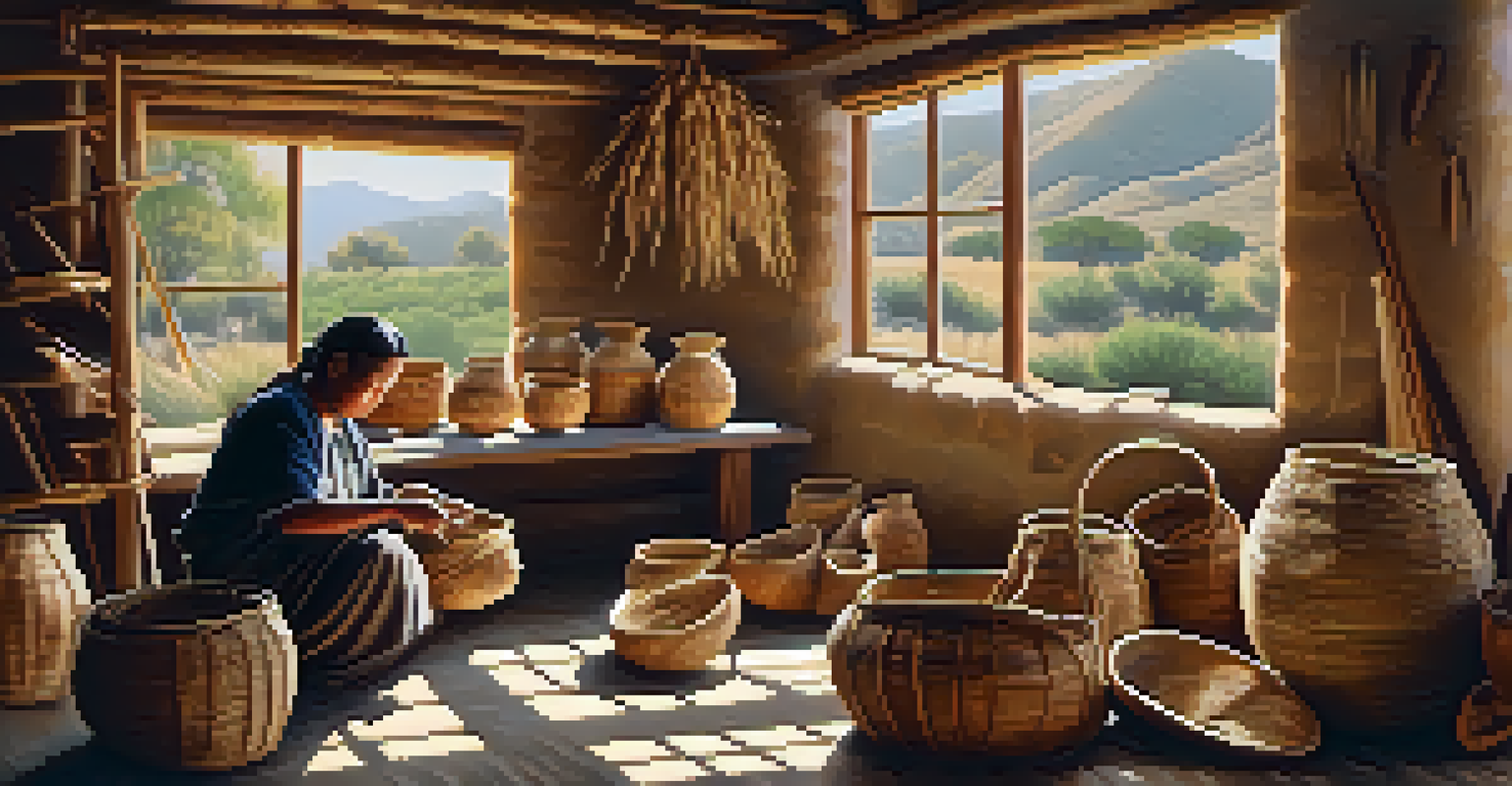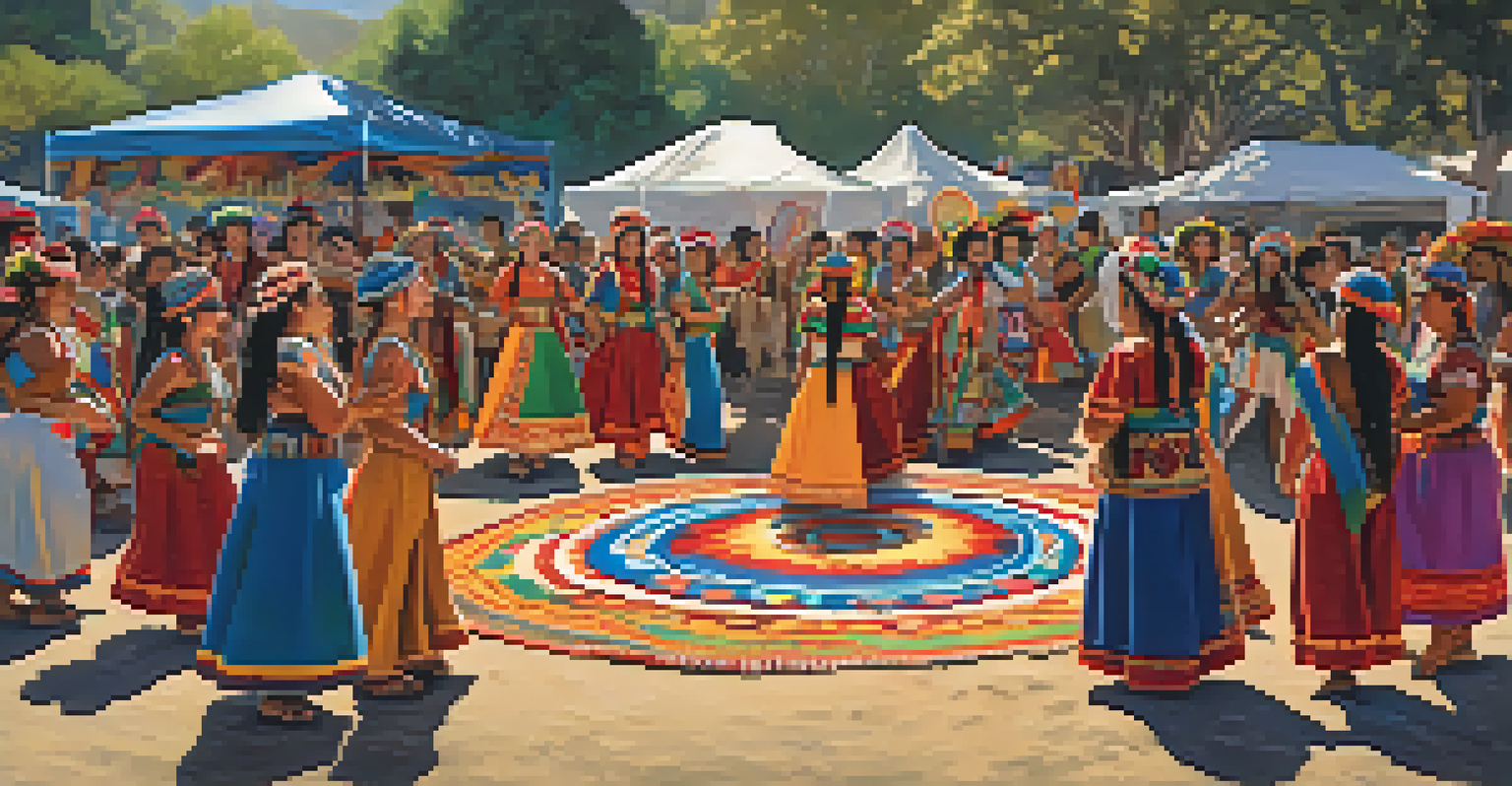Exploring Malibu's Native American Heritage and Traditions

The Indigenous Roots of Malibu: An Overview
Malibu, known for its stunning coastlines, is also rich in Native American history. The Chumash people were the original inhabitants of this beautiful region, thriving on its natural resources for thousands of years. Their deep connection to the land shaped their culture, traditions, and way of life, creating a legacy that still resonates today.
We do not inherit the earth from our ancestors; we borrow it from our children.
The Chumash community relied heavily on the ocean and the surrounding mountains, utilizing fish, plants, and animals for food and materials. This harmony with nature fostered a profound respect for the environment, a principle that remains important in contemporary discussions about sustainability and conservation. Understanding this relationship offers insight into their worldview and cultural practices.
As we delve into Malibu's Indigenous heritage, it's essential to recognize the ongoing impact of colonization. The Chumash people faced significant challenges over the centuries, yet their resilience shines through in the preservation of their traditions and stories. This exploration invites us to appreciate not just their past but also their present contributions to the community.
Chumash Language: A Key to Cultural Identity
Language is a vital component of cultural identity, and the Chumash language is no exception. Historically, the Chumash spoke a group of dialects that reflected their diverse communities. Today, efforts are underway to revitalize this language, ensuring that future generations can connect with their heritage.

Learning Chumash words and phrases is more than just an academic exercise; it fosters a sense of belonging and pride among community members. Language encapsulates stories, traditions, and knowledge passed down through generations, acting as a bridge to the past. For instance, traditional stories often feature animal characters that teach moral lessons, reinforcing the values of the Chumash culture.
Chumash Heritage and Resilience
The Chumash people's rich cultural legacy and resilience highlight their enduring connection to the land and community despite historical challenges.
Community programs focused on language revitalization are making strides in Malibu and beyond. Workshops, classes, and online resources are engaging both Native and non-Native speakers alike, creating a collective effort to preserve this important aspect of Chumash identity. This revival is a beautiful reminder of the power of language to unite and empower.
Traditional Chumash Crafts and Artistry
Art and craftsmanship have always played a significant role in Chumash culture, showcasing their creativity and connection to the environment. From intricate basket weaving to beautifully carved wooden items, these crafts serve both functional and aesthetic purposes. Each piece tells a story, reflecting the skills and traditions of the Chumash people.
Language is the road map of a culture. It tells you where its people come from and where they are going.
For example, basket weaving is not just an art form; it involves utilizing natural materials like willow and sedge, demonstrating a deep understanding of the land. These baskets often feature intricate designs that have cultural significance, passed down through generations. This artistry illustrates how the Chumash intertwined their daily lives with their cultural heritage.
Today, local artisans continue to practice these traditional crafts, often incorporating modern techniques while honoring their ancestors' methods. Workshops and exhibitions provide opportunities for the public to engage with these art forms, fostering appreciation and understanding of Chumash culture. This vibrant display of creativity helps keep the traditions alive and thriving.
Chumash Spirituality and Connection to Nature
Spirituality is deeply woven into the fabric of Chumash life, with a strong emphasis on the connection to nature. The Chumash believe that all elements of the natural world possess spirit and significance, guiding their daily practices and rituals. This worldview fosters a profound respect for the environment, encouraging sustainable living long before it became a global movement.
Rituals and ceremonies are an essential aspect of Chumash spirituality, often designed to honor natural elements like the sun, moon, and water. For instance, the 'Kuksu' ceremony is a significant event that celebrates the renewal of life and community. Such practices not only reinforce cultural values but also strengthen community bonds and provide a sense of belonging.
Revitalizing Chumash Language
Efforts to revitalize the Chumash language are crucial for fostering cultural identity and pride among community members.
In today's world, the Chumash continue to advocate for environmental stewardship, drawing on their ancestral wisdom. Their commitment to preserving the land and its resources serves as a powerful reminder of the interconnectedness of all living beings. By embracing these teachings, we can all contribute to a more sustainable future.
Traditional Chumash Cuisine and Gathering Practices
Food has always been a cornerstone of Chumash culture, with traditional dishes reflecting the bounty of their environment. The Chumash diet included a variety of fish, acorns, seeds, and berries, showcasing their resourcefulness and deep understanding of local ecology. Gathering and preparing food was often a communal activity, reinforcing social ties and cultural identity.
Acorn preparation, for example, is a meticulous process that highlights the Chumash's knowledge of their resources. Acorns were ground into flour and used to make porridge or bread, showcasing the ingenuity of the community. This practice not only nourished bodies but also served as a means of storytelling and sharing knowledge among generations.
Today, there’s a growing interest in traditional Chumash cuisine, with chefs and food enthusiasts experimenting with these ingredients. Community events often celebrate this culinary heritage, bringing people together to share meals and stories. These gatherings serve as a beautiful way to honor the past while engaging the present in a meaningful way.
Preserving Chumash Heritage Through Education
Education plays a crucial role in preserving Chumash culture and ensuring its continuation for future generations. Various initiatives, including local schools and cultural centers, work to incorporate Chumash history and traditions into their curricula. This approach fosters a deeper understanding of the Indigenous experience while promoting respect for diverse cultures.
Cultural workshops, storytelling sessions, and art classes are just a few examples of how education can bridge the gap between the past and present. These programs not only empower Chumash youth but also engage the broader community, fostering connections and mutual respect. Learning about Chumash heritage is an enriching experience for everyone involved.
Celebrating Chumash Culture
Festivals and events celebrate Chumash traditions, promoting cultural education and community engagement for both Native and non-Native participants.
Furthermore, collaborations between local tribes and educational institutions highlight the importance of Indigenous voices in shaping curricula. By integrating Chumash perspectives, students gain a more comprehensive understanding of the region's history and the ongoing impact of colonization. This commitment to education ensures that the richness of Chumash culture continues to thrive.
Celebrating Chumash Culture: Festivals and Events
Celebrations are an integral part of Chumash culture, providing opportunities for community members to come together and honor their heritage. Festivals often showcase traditional music, dance, and art, allowing participants to immerse themselves in the vibrant aspects of Chumash life. These events are not only a celebration but also a means of cultural education for those outside the community.
Annual gatherings, such as the Chumash Day Festival, feature activities that highlight traditional practices and showcase local artisans. Families come together to share stories, participate in cultural demonstrations, and enjoy traditional foods. Such festivals foster a sense of pride and connection among community members, reinforcing the importance of their heritage.

Moreover, these celebrations serve as an invitation for broader community engagement. Inviting non-Native participants allows for cultural exchange and understanding, bridging the gap between different communities. By celebrating Chumash culture, we not only honor their past but also contribute to a more inclusive future.